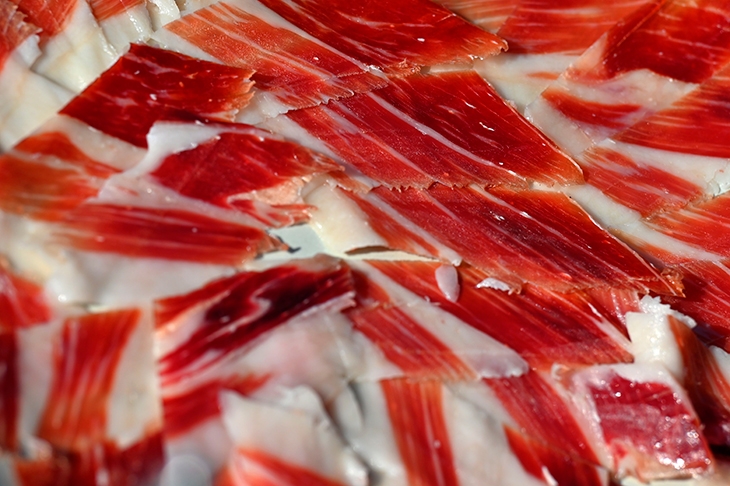Who Poisoned Your Bacon Sandwich? is a much more sophisticated read than its lurid English title suggests. Guillaume Coudray’s book was first published in France in 2017 as Cochonneries, a play on words that better reflects the nuanced nature of his argument.
Cochonnerie means rubbish, or junk. Derived from cochon — pig — it’s a clever title for a volume that examines, with impressive historical and scientific depth, a group of chemicals extensively used to manufacture processed meats.
Investigations into cured meats, such as saucisson, bacon and ham, are big in France, but until now rare in the UK where the word charcuterie barely trips off the lips of the affluent classes, let alone the general populace. But Coudray, a documentary film maker, follows in the footsteps of the food journalist Jean-Pierre Coffe, who from the 1990s warned the French public that their time-honoured artisan foods were being supplanted by hi-tech look-alikes. Coffe blew the gaff, for instance, on the practice of dusting fast-track, factory-made salami with flour to fake the bloomy mould that naturally occurs on the skin of patiently cured equivalents. Coudray’s target is more precise: nitrate and nitrite additives (E250, E251, E252) employed to give meat products a uniform rosy colour and accelerate the curing process.
Nitro-formulations were given coy, fanciful names: Magique Rose, Prague Powder and Églantine ‘pinking salt’
In its most traditional forms, curing — the safe preservation of fresh meat — requires only salt (for its property of drawing out moisture), air (for its drying and ventilating effects) and time (to let the meat naturally develop the zinc proto-porphyrin pigment that brings an appetising red hue to the plate). This mode of curing was the norm until the 18th century. Coudray demolishes ‘the 5,000 year myth’, put about by chemical companies, that meat has been nitro-preserved since time began. The ancient Egyptians used nitrites to make mummies, but not food.
Now the majority of cured meats are nitro-treated; the commercial motivation is powerful. ‘Nitro treatment lowers costs, accelerates production, simplifies the work of factories, prolongs shelf life, and is the quickest way to achieve that lovely colour that customers like so much.’
As is so often the case with dubious food technologies that could have negative impacts on human health — genetic modification comes to mind — the relatively modern push for nitro-meats came from the US. Chicago meat-packing companies developed a rapid curing method between 1870 and 1900 which came to be known as ‘the chemical method’, or ‘the American cure’. ‘This Chicago system was a fore-runner of Fordism. It produced foodstuffs so homogenous that it was possible to achieve standardisation.’
By the 1950s, meat curers worldwide had access to a portfolio of nitro-formulations with coy and fanciful names: Prague Powder; Églantine ‘pinking salt’; Tourose for ‘instant reddening’; Magique Rose, ‘a new miracle reddener’, Vitorose (vite-au-rose or quick to pink) and more. Coudray says that nowadays, European meat-curing is ‘thoroughly retuned to the transatlantic model, although contemporary nitro-curing preparations now avoid any reference to colouring. This lexical shift is consistent with the industrial meat industry’s script that these chemicals ensure the safety of its products from botulism and other food poisoning pathogens. Coudray makes mincemeat of their defence. Food safety is a red herring. Nitro-meats are more profitable, hence their grip. A nitro-treated Spanish Serrano-type ham, for instance, can be on the market in less than 100 days, whereas one produced without such chemicals takes up to 30 months to mature.
Coudray is neither anti-meat, nor anti-cured meats. His point is that chemical treatment is unnecessary. Curing meat without nitro-additives takes more time and care, he says, but the results are worth it: ‘an excellent colour and aroma that is second to none.’ Parma ham is one such example. For several decades, Parma’s producers used these chemical quick fixes, but in the middle of the 1990s they decided to revert to traditional Parmigiana production methods, using no other ingredient than salt.
In the last few years, as the UK has seen its charcuterie category grow, many smaller producers now shun nitrates and nitrites. Naturally cured bacon, greyer in colour, and with a shorter shelf life, practically unobtainable in recent years, is now increasingly on offer.
The only weak strand in Coudray’s book is his assertion that nitro-meats are carcinogenic, therefore toxic, a view predicated on epidemiological data, which is the weakest type of diet research. Association doesn’t mean causation. Confounding factors exist; someone who savours bacon butties daily might also be eating too much sugar, smoking, be under stress, the list goes on.
But even if you remove this shaky evidential plank, and despite its lurid English title, Coudray’s book presents a lucid argument that thoughtful eaters will find highly persuasive. He has compiled a well-organised and solid dossier that alerts us to legalised chemical trickery.






Comments